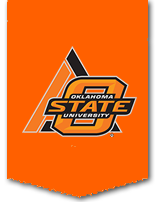FAPC offers back-to-school food safety tips
By Melanie Jackson, FAPC Communications Graduate Assistant
(Stillwater, Okla. – Aug. 16, 2017) With the beginning of a new school year, parents and caregivers may be concerned about whether children are eating the food in their lunch boxes. The more important concern, though, is whether the food is safe to eat.
According to the U.S. Department of Agriculture’s Food Safety and Inspection Service, the most common foodborne illness is salmonella infections. Approximately 50 percent of the 42,000 annual infections occur in infants and school-age children.
Without proper storage, perishable food is at risk for harmful bacteria after four hours, said Ravi Jadeja, food safety specialist for Oklahoma State University’s Robert M. Kerr Food & Agricultural Products Center.
“Bacteria that can cause foodborne illness or food poisoning grow rapidly at temperatures between 40 and 140 degrees [Fahrenheit],” Jadeja said. “These microorganisms can multiply to dangerous levels in just four hours, but packed lunches and snacks can be kept safe by following USDA’s four steps to food safety: clean, separate, cook and chill.”
FAPC offers the following food safety tips for parents and caregivers to send their children to school with safe and satisfying lunches.
Packing and storing food
- Start by washing hands thoroughly and ensuring contact surfaces, utensils and dishes are clean to prevent contamination.
- Use separate cutting boards and utensils for produce, meat and poultry to prevent cross-contamination.
- Wash all fruits and vegetables and ensure canned goods are not expired.
- Include at least two cold sources to keep perishable foods at a safe temperature. A frozen juice box or water bottle can be used along with a freezer pack. Place the cold sources on top and bottom of the perishable food.
- Prepackaged meals often contain perishable food and should be refrigerated and packed with cold sources, too.
- Store lunches in an insulated lunchbox or soft-sided bag. Paper bags may not keep perishable items safe.
- Pack lunches the night before and store in the refrigerator to keep food colder longer.
Eating and disposing leftovers
- Include disposable wipes to clean hands before and after eating.
- Discourage children from trading food during lunch since proper food safety protocols may not have been followed during preparation of other lunches.
- Dispose of all remaining perishable food, packaging and paper bags when finished eating. Do not reuse packaging. Thoroughly clean storage containers and lunch bags between uses.
FAPC, a part of OSU’s Division of Agricultural Sciences and Natural Resources, is celebrating its 20-year anniversary in 2017. Since its inception in January 1997, the center’s research laboratories, pilot-processing facilities, educational programs and seminars have kept food and agricultural processors and entrepreneurs on the forefront of cutting-edge value-added processing and technology.
- ### -
Oklahoma State University is a modern land-grant university that prepares students for success. OSU has more than 36,000 students across its five-campus system and more than 25,000 on its combined Stillwater and Tulsa campuses, with students from all 50 states and around 120 nations. Established in 1890, Oklahoma State has graduated more than 260,000 students who have been serving Oklahoma and the world for 125 years.

